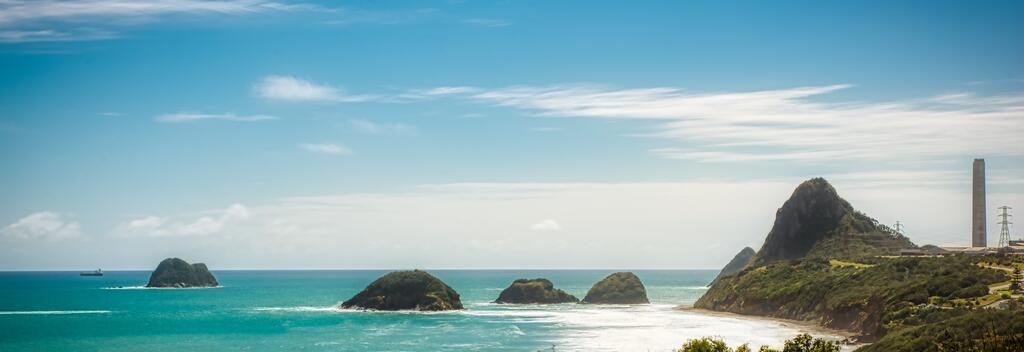-
Popular places to visit
Popular things to do
Helpful tips
Here's a few useful links to help with planning your trip to Aotearoa New Zealand.
-


Paritutu and the Sugar Loaf Islands are remnants of a large volcano that was active nearly two million years ago.
The Sugar Loaf Islands, off the coast of New Plymouth, are the eroded stumps of an ancient volcanic crater. Above the water you can see five islands (Mataroa, Motuotamatea, Pararaki, Motumahanga, and Moturoa Island), and several sea stacks and reefs. Below the surface, there are spectacular cliffs, canyons, boulder reefs and sand expanses.
Historically, the Sugar Loaf Islands were a place of refuge for many Māori women and children of Ngāmotu during the Taranaki Land Wars in the early 1800s, as they were considered a safe place to evade the ongoing turmoil.
The waters around the islands are home to at least 89 species of fish, 33 species of encrusting sponges, 28 species of bryozoans, and 9 nudibranchs. The area is a mixing place for both cool and warm water species. Seals and oceanic seabirds breed here; dolphins and whales regularly pass through. The islands, both above and below water, have been protected since 1986.
Guarding the eastern end of New Plymouth's harbour is Paritutu Rock, another volcanic remnant. There's a track up the rock, beginning on the northern side. It's a scramble to the top but the bird’s-eye view of the entire New Plymouth coastline, city, port, and Sugar Loaf Islands are spectacular.
Paritutu once stood a little taller, but the summit was painstakingly flattened by Māori in pre-European times to make a level site for whare (houses) and kūmara pits.
Charter companies tour around the Sugar Loaf Islands, and there are diving operators who can make it possible to see the underwater sights.